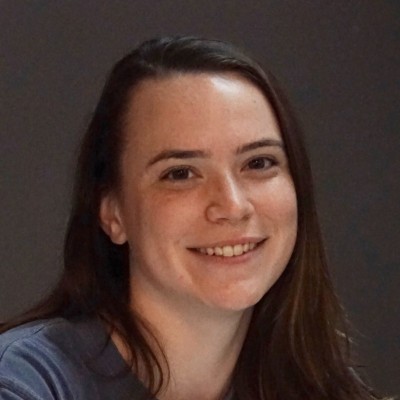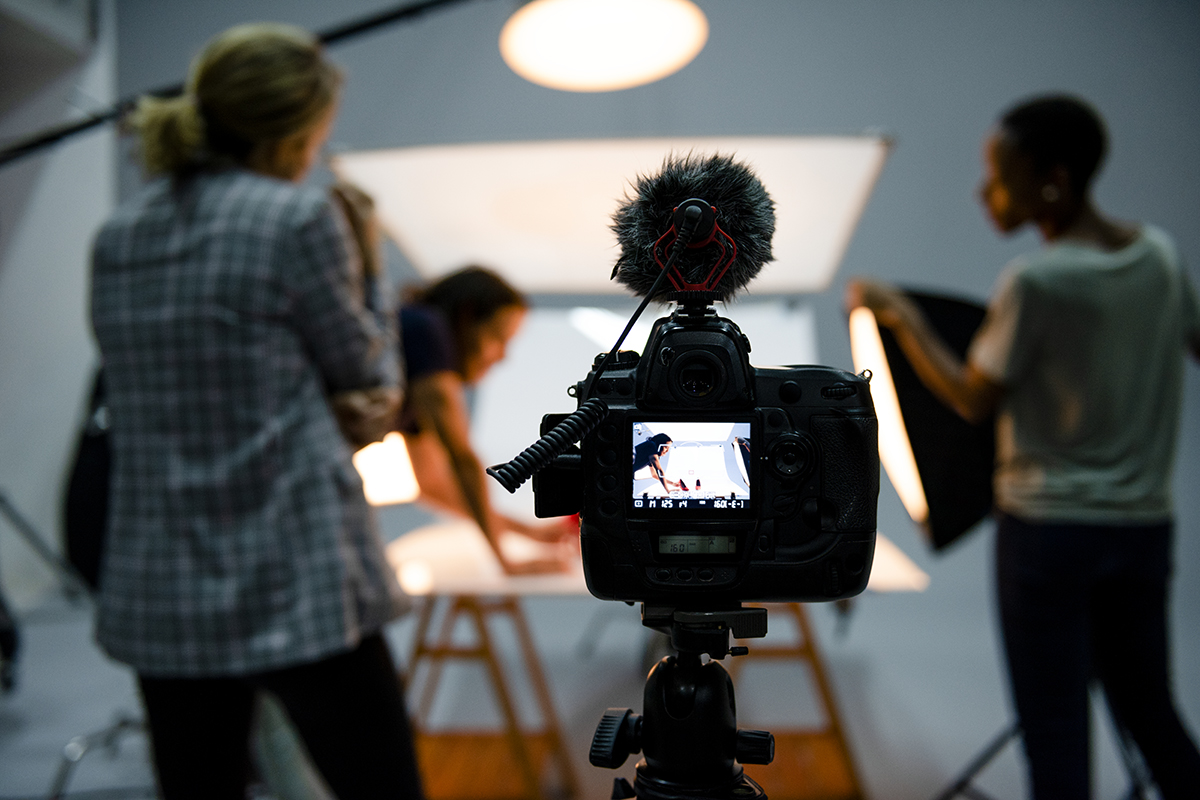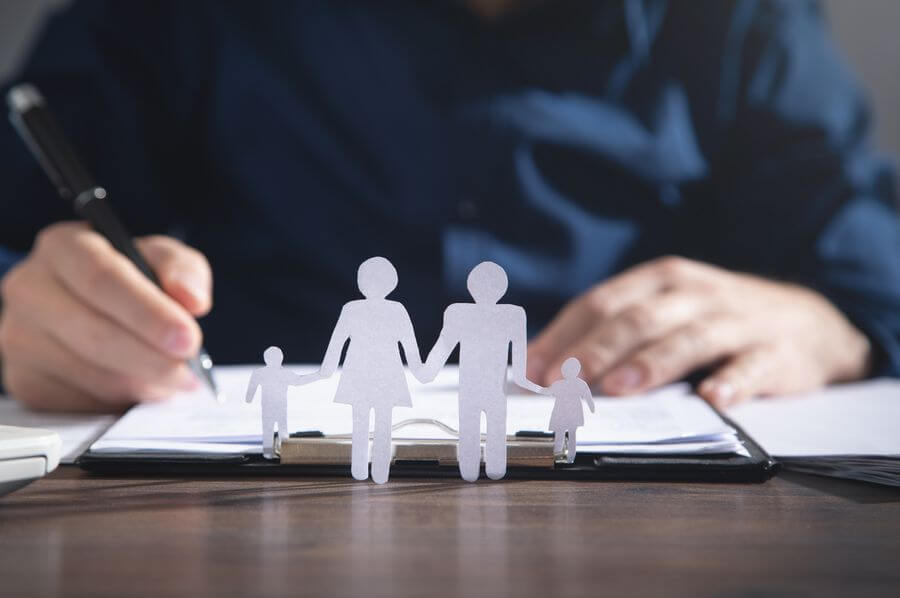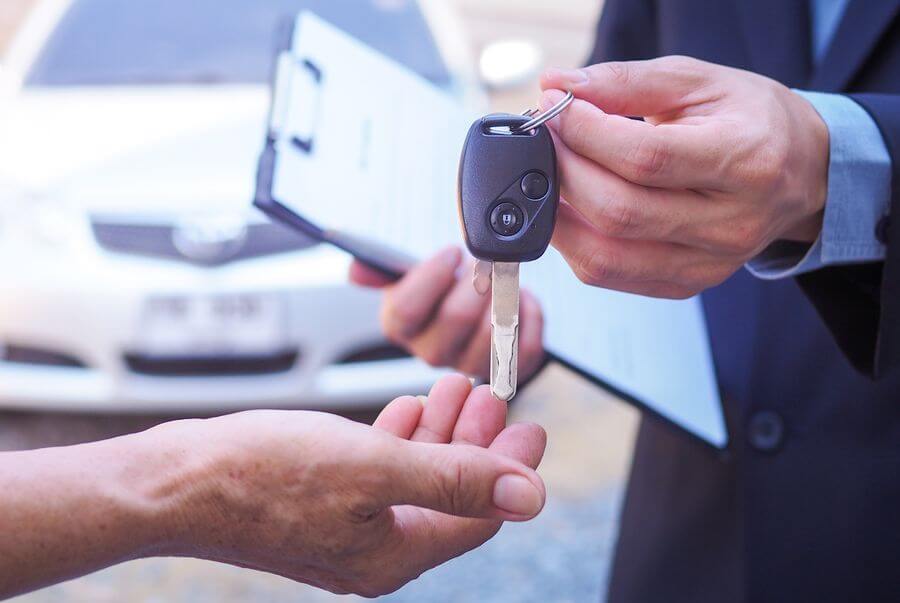One of the most neglected steps in the media production process is obtaining a signed video release form from the subject. This legally binding document enables a third party (such as a producer or distributor) to use the likeness of a subject (photo, video, or voice) in a media publication for commercial or personal purposes. Depending on the nature of the release, the form can be simple or complex. The document ensures that the individual is aware of how their image, voice, or personal information will be used and has given their consent to its use.
Other names for the form include:
- Release form for video
- Video release document
- Video consent release form
This article will explain why the form is required and when to use it. It will also discuss the various types of release forms and the information to include. There are also free, downloadable templates that you can customize to suit your needs.
Free Forms and Templates
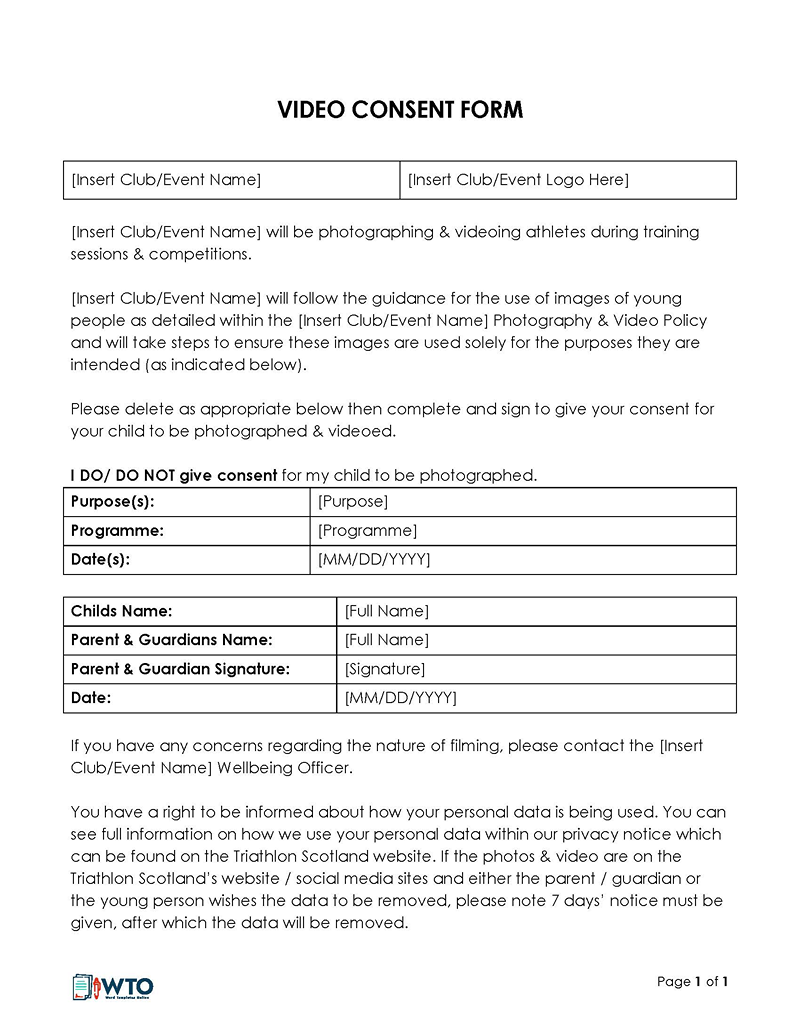
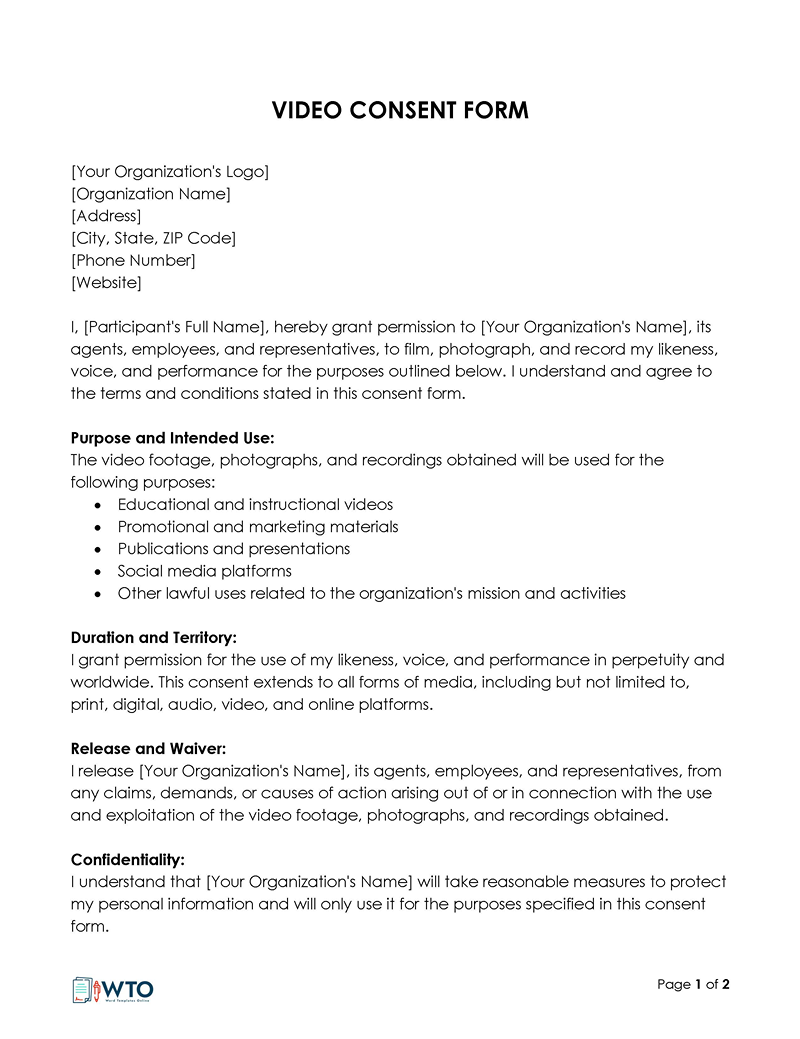
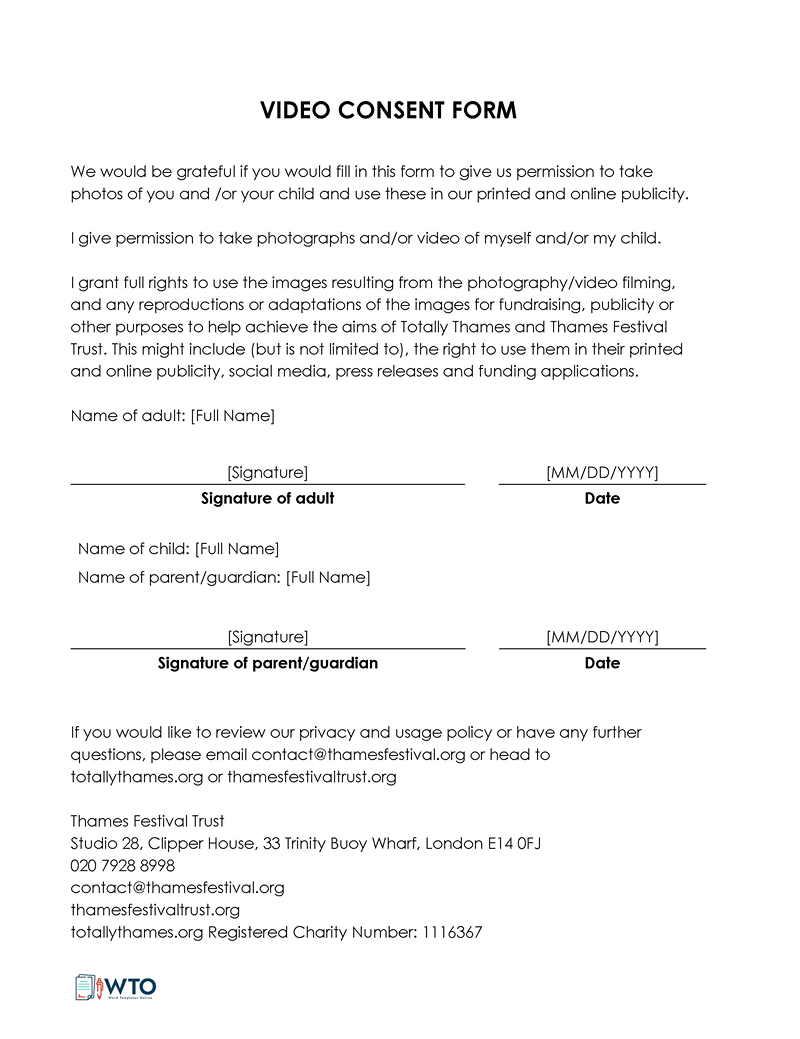
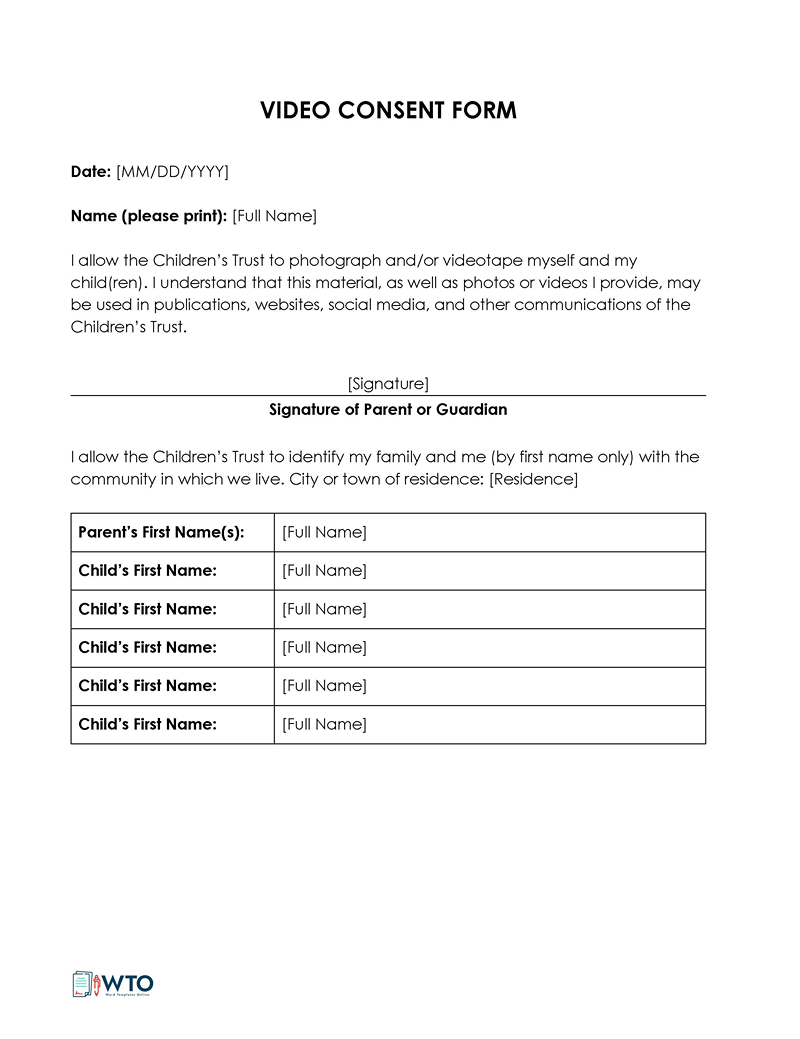
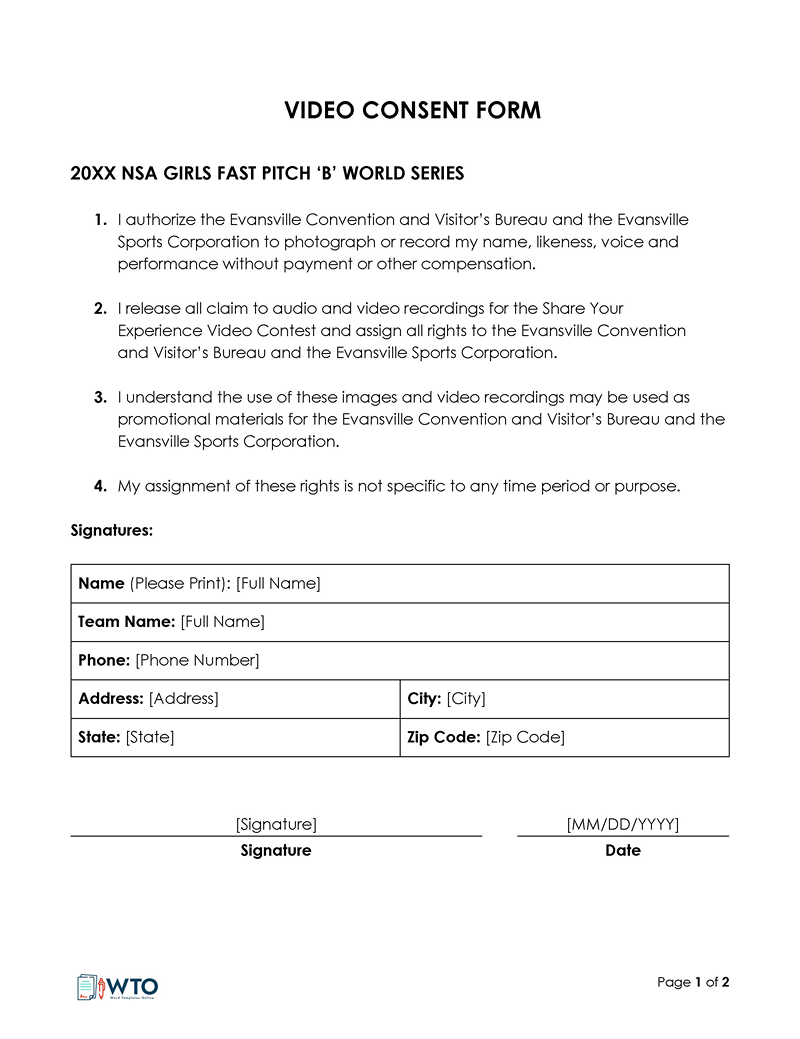
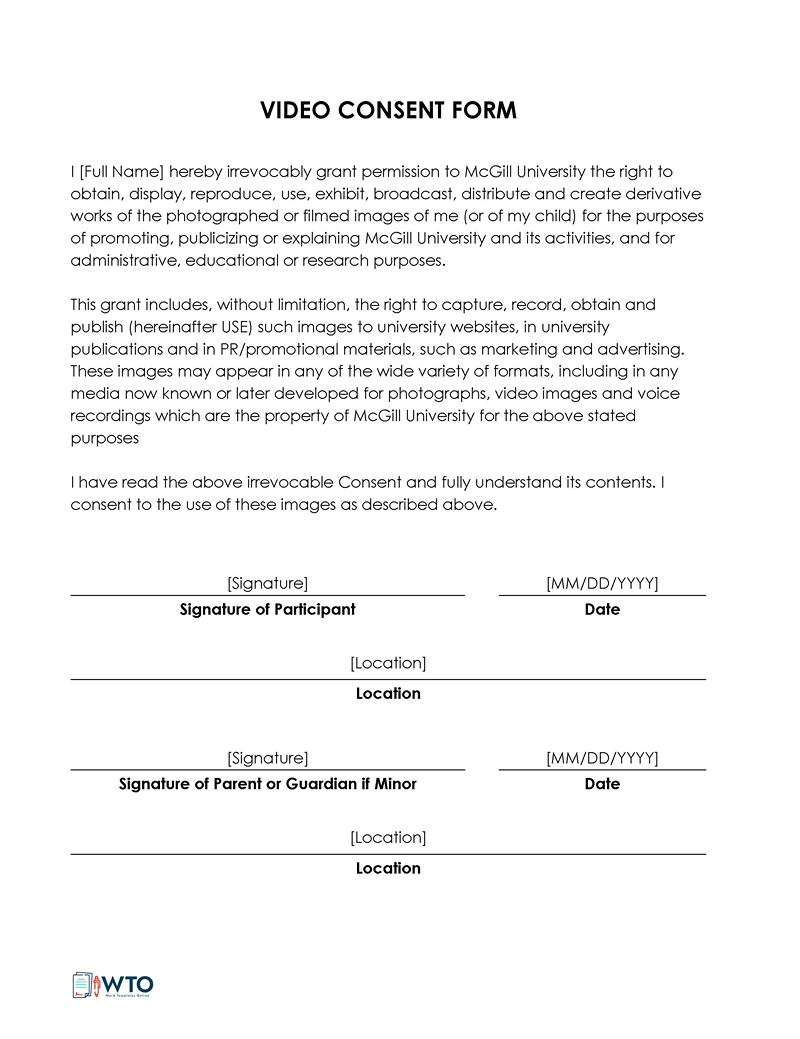
Who Needs This Form
Anyone who intends to use an individual’s image, voice, or personal information in a film should obtain a consent form from that individual. Businesses and marketing organizations utilize it when creating promotional materials, such as social media posts and television commercials. Event organizers may use the form when producing content for events such as trade shows, conferences, or product launches.
Filmmakers utilize the form when producing a feature film or video for theatrical, streaming, or home release. In general, consent forms are particularly important in situations where the likeness of the subject will be used for commercial or promotional purposes. However, it is generally a good practice to obtain permission for any use of an individual’s image, voice, or personal information in a video, regardless of the context or purpose.
Why Video Release Forms Matter: Protecting Your Rights
A release form is a useful legal document for individuals or organizations to use the subject’s likeness in the video. Various laws protect subjects’ privacy regarding how their likeness is used. They may take legal action if their likeness is used commercially or exploited without permission.
You may need the form for any of the following reasons:
Legal protection
The form is necessary since it proves that the subject permitted their likeness to be used, which can be a defense should legal issues arise. They include clauses that limit the use of the footage, such as prohibiting commercial use or limiting the publication to particular types of media. These restrictions protect the subject’s privacy and ensure their likeness is not used inappropriately.
Ethical considerations
Certain situations warrant the use of the form. For example, media production involving vulnerable populations, such as minors, disabled individuals, or minorities, requires extra caution. In these cases, additional safeguards may be necessary to ensure that consent is obtained and the subject’s rights are protected.
note
In most jurisdictions, individuals under a certain age, often 18, cannot sign legally binding contracts. In these cases, the minor’s parent or legal guardian must sign the form to obtain permission to use the minor’s image, video, or voice in a production.
Clarity of purpose
It stipulates how the footage will be used, thus clarifying the purpose of the production. It outlines the production’s purpose, scope, duration, and responsibilities, as well as the involved parties and the potential risks associated with participation. This significantly reduces the possibility of conflict among the parties involved.
Compliance with laws and regulations
It is a simple document that guarantees that the subject has consented to their likeness being featured in a piece of media. This is essential, as you must comply with certain state and federal privacy laws and regulations that demand obtaining explicit permission from individuals before using their data.
Professionalism
During production, the form signifies a professional attitude and demonstrates your commitment to transparency. This helps to establish trust and build a positive relationship between you and the subject.
When a Video Release Form is Needed and When It is Not
Here are some of the instances when you would and would not require a consent form for filming an individual(s):
When to use
Permission is required when a subject’s footage (audio, video, or image) is used in a media publication. The following situations warrant the use of a consent form:
- When producing a media publication for commercial purposes, such as promotional material or advertisements, you must seek the subject’s permission to use their likeness. The release form ensures the subject is aware of how their likeness is used.
- You are required to obtain permission from parents when recording their children. This is because minors cannot give informed consent.
- When recording a subject in a sensitive setting, for example, in a medical setting, you may require the release form. This is essential, as it protects their privacy in an especially vulnerable situation.
When the form is not necessary
A release form is not required if the subject cannot be identified. You can, for example, record footage of a generic meal on a plate, and it is impossible to determine who owns it. The form is also not required when filming in certain situations, such as:
- You do not require it when recording people in a public setting, for example, in a holiday parade or street performance, and the recording is for personal and non-commercial use.
- You do not need the form when recording your family or friends at a gathering to produce a home movie or a simple video. However, if you intend to share it publicly, it may be respectful to obtain their permission.
- It is not needed when recording something for informational or journalistic purposes, such as at a public event or during an interview. It is advisable, however, to check local and state laws, as some jurisdictions may require you to seek permission for news reporting purposes.
- The form is not required in the case of artistic expression, for example, using a subject’s likeness in a film. The use of someone’s image in creative work, such as painting or sculpture, may be considered protected under the First Amendment’s guarantee of freedom of speech and artistic expression. However, obtaining the subject’s consent is advisable, if possible, to avoid potential legal issues.
- If the footage is being recorded for educational or instructional purposes, such as training or a classroom lecture, and the individuals captured are not identifiable, then permission may not be necessary.
- If the video is being recorded for security or surveillance purposes, such as in a workplace or a public transportation system, and the individuals captured are not identifiable, then permission may not be required.
Information to Include in Video Release Form
Although the wording and content of each release form will vary slightly, there are a few essential components to include. The elements consist of the following:
Purpose
You should specify the various types of footage (photo, video, and audio) the form encompasses and what kind of production you intend to use them for, whether for commercial or other purposes. This section also specifies which part of the footage will be utilized. For example, if you are recording an advertisement, you may specify which parts of the footage will be in the final piece.
You may also include any related footage that you may need in the future. Write in a way that includes all forms of recording.
Description of the individual
The form should describe the individual or individuals who will be recorded, including any identifying information such as their name, age, or occupation.
Consent to be recorded
It should clearly state that the individual is consenting to be recorded and outline the specific circumstances under which the recording will take place.
Consent to the use of images and information
This is the most important part of the form and should also outline how the individual’s image or personal information will be used and obtain explicit consent for each specific use. This may include use in promotional materials, on social media platforms, or for other purposes.
Rights to modify
Provide a clause stating that you can edit the footage however you deem fit. This could include removing parts of the footage for clarity or adding effects for aesthetic purposes. This clause is essential, as you may not know how you will utilize the footage in the future.
Commercial and non-commercial rights
Indicate whether the material will be used for commercial or non-commercial purposes. It is advisable to specify for what reason the subject is consenting, as you may later decide to use the footage for purposes other than those originally intended. It is essential to specify that the footage could be utilized for future commercial purposes, even if you do not earn any revenue from it.
Time limit
Unless the subject categorically objects, include a clause that allows you to use the footage indefinitely. With an indefinite time limit, you can use the footage in the future without fear of legal consequences.
Future uses
Indicate every possible use for the footage in the future, whether or not it will be used in a single production. It is possible that the content may be required in the future as well. If the subject does not consent to their likeness, voice, or image being used in future projects, you must obtain permission for each new project.
Payment
The payment clause specifies whether the individual providing consent for the use of their image, voice, or personal information will receive any payment or compensation in exchange. It may specify the amount and method of payment for commercial or marketing purposes or include provisions related to expenses or reimbursement for non-commercial or educational purposes.
The payment clause should be reviewed carefully by both parties to ensure agreement. It is worth noting that payment clauses are not always included in such agreements. In many cases, video productions are for non-commercial or educational purposes where payment is not expected or provided, so a payment clause is not necessary.
Contact information
Including contact information for the individual or organization responsible for the video, as well as any relevant regulatory bodies or legal resources, is an important element. This allows the individual to have a point of contact if they have questions or concerns about the use of their image or personal information, and it also provides transparency and accountability for the organization or individual responsible for the recording.
The contact information should be clearly presented and may include the name, address, phone number, and email address of the responsible party. In addition, if there are any regulatory bodies or legal resources that the individual can contact for additional information or support, this information should also be included.
Providing clear and accessible contact information can help build trust with the individual and demonstrate a commitment to transparency and ethical conduct.
Signatures
In the final section, the subject signs the form and also provides the date when they signed it. You are also required to sign it to guarantee its legal enforceability. By signing it, both parties demonstrate that they have read and understood the terms presented in the document.
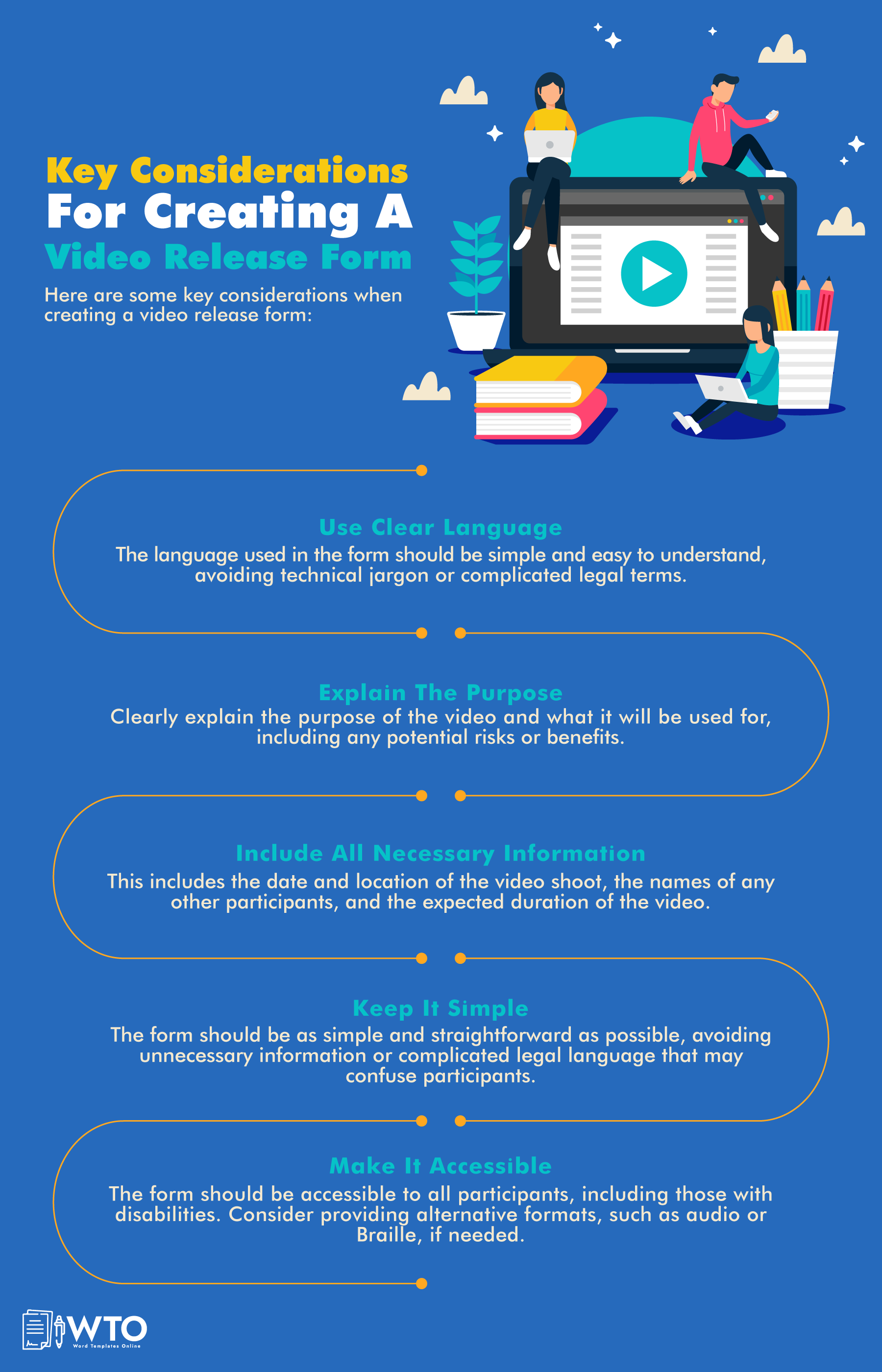
Consequences of not Having a Consent Form
Not having a release form may result in several consequences, especially if you use the footage for promotional purposes. The following are some potential consequences of not obtaining explicit permission to use the footage:
Copyright infringement
Not obtaining explicit consent for recording could result in legal problems if the subject whose likeness you have used in the footage files a lawsuit for copyright infringement. In such cases, the missing form could be seen as evidence that you did not seek permission prior to the production. This can lead to legal action, fines, and damages.
Invasion of privacy
You may be held liable for invasion of privacy claims if you use an individual’s likeness in a publication without their explicit permission. This could result in expensive lawsuits, fines, and legal fees.
Loss of credibility
If you use an individual’s likeness in a production without their permission, you risk jeopardizing your reputation and your organization’s credibility. This may result in damage to your brand name, a loss of business opportunities, and a loss of trust from potential clients and partners.
Financial losses
Not obtaining explicit permission for filming and using footage may result in the subject suing you for any of the reasons listed above. You may be required to pay hefty legal fees and compensation packages.
Types of Video Release Forms
Different types of release forms can be used, depending on the purpose of the publication. Listed below are the most common types:
Standard
A standard release form is used to obtain consent from an individual to use their likeness in a production. It is also known as a standard talent release form. It details the location, purpose, and date of the recording, as well as compensation details and restrictions on its use. This simple form is commonly used for non-commercial purposes and does not include any payment to the subject.
Minor
A minor release form obtains permission from a minor’s legal guardian or parent to use their child’s likeness in a video production. Minors cannot enter into legally binding contracts. Therefore, the parent signs this form to approve the use of footage featuring their child.
Model
A model signs a release form to grant an entity permission to publish their likeness commercially. It is also referred to as a “talent release form.” It typically includes details such as the name and contact information of the model, the nature of the modeling or performance work, and the scope and duration of the permission granted.
Music
A music release form grants record labels, music producers, or artists permission to use a subject’s likeness in their music videos. The subject agrees to appear in it by signing the form according to the discussed terms. Music videos may be promotional or created for instructional purposes.
YouTube
This release form grants content creators permission to use a subject’s likeness in a YouTube video. It details the date, location, and purpose of the production. Since the content creator may monetize it and earn from it, the subject may be compensated. YouTube may also require creators to obtain consent from subjects before uploading the content to the platform.
Location
A location release form is used to obtain permission for filming at a particular location or property. It typically includes details such as the name and address of the location, the dates and times of filming, and any restrictions or conditions related to the use of the location.
More Forms
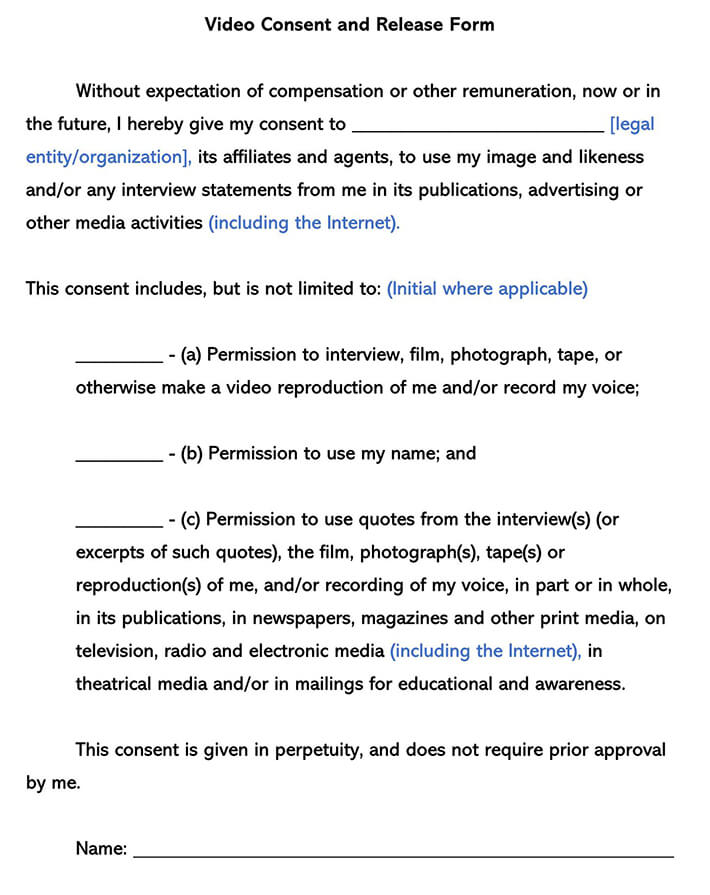
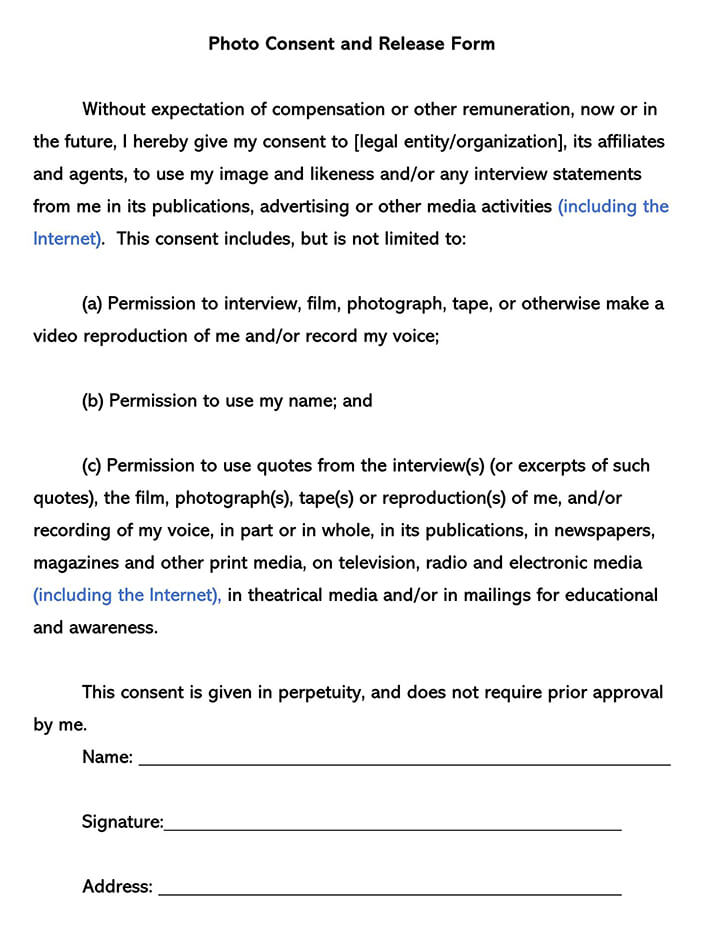
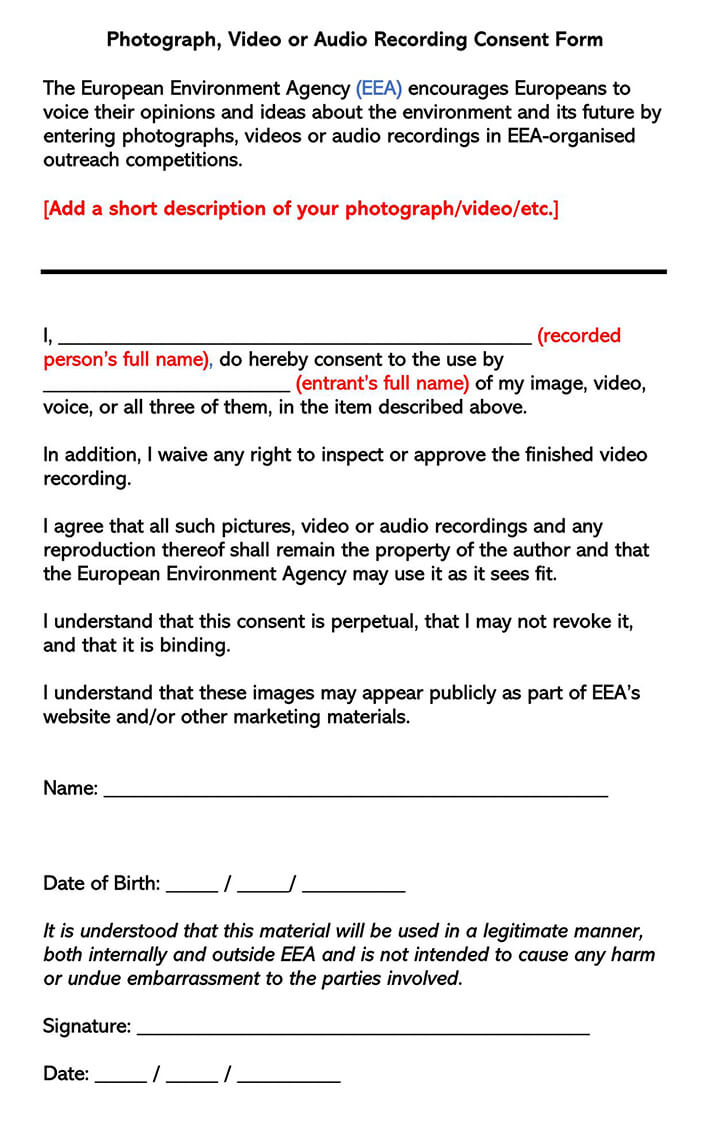
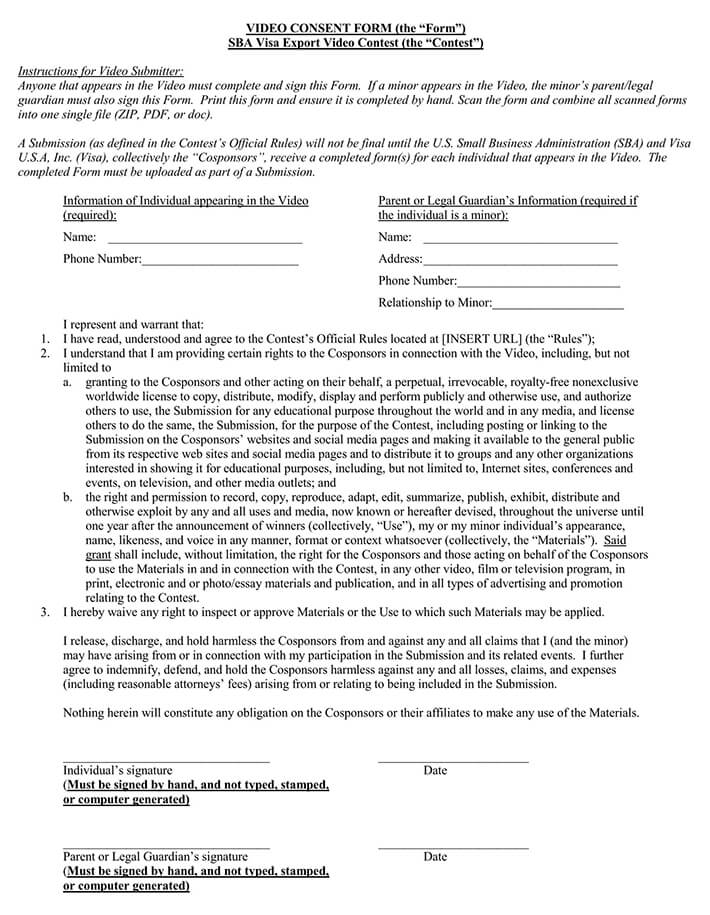
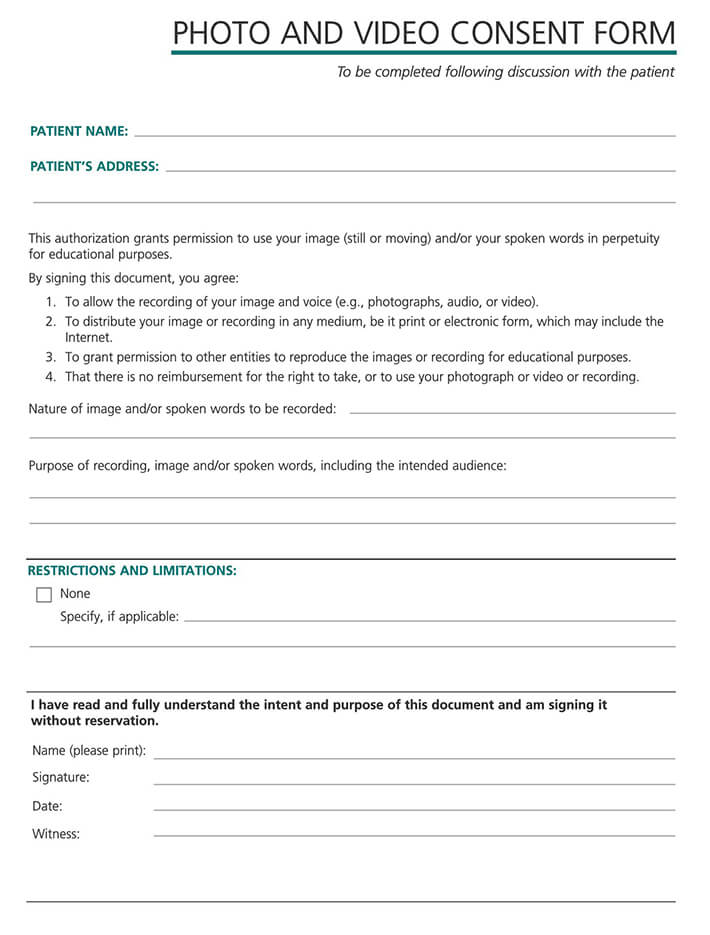
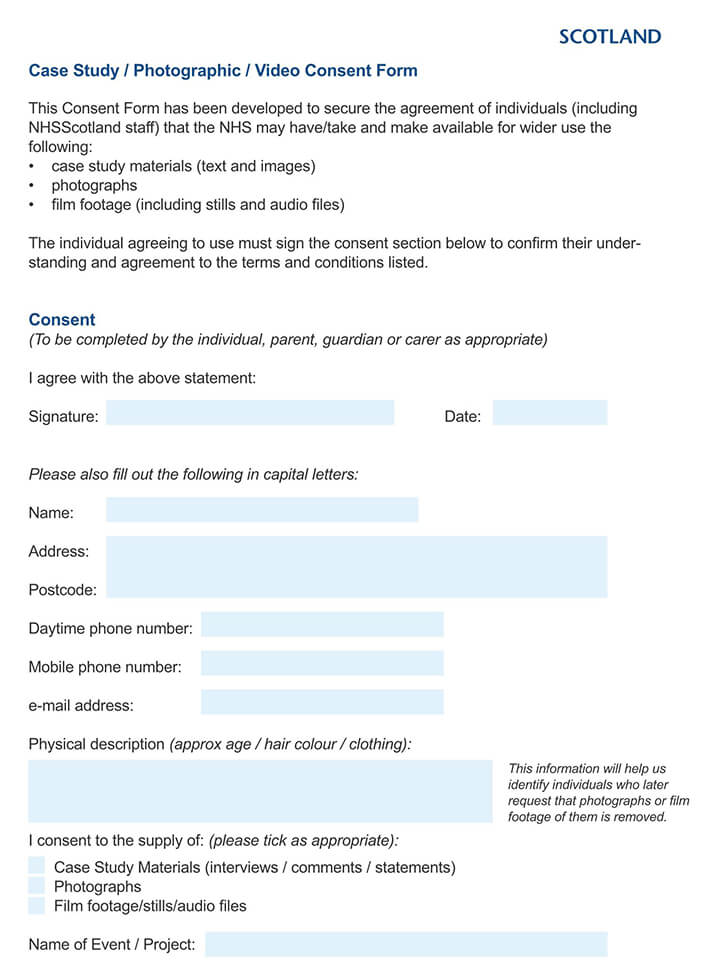
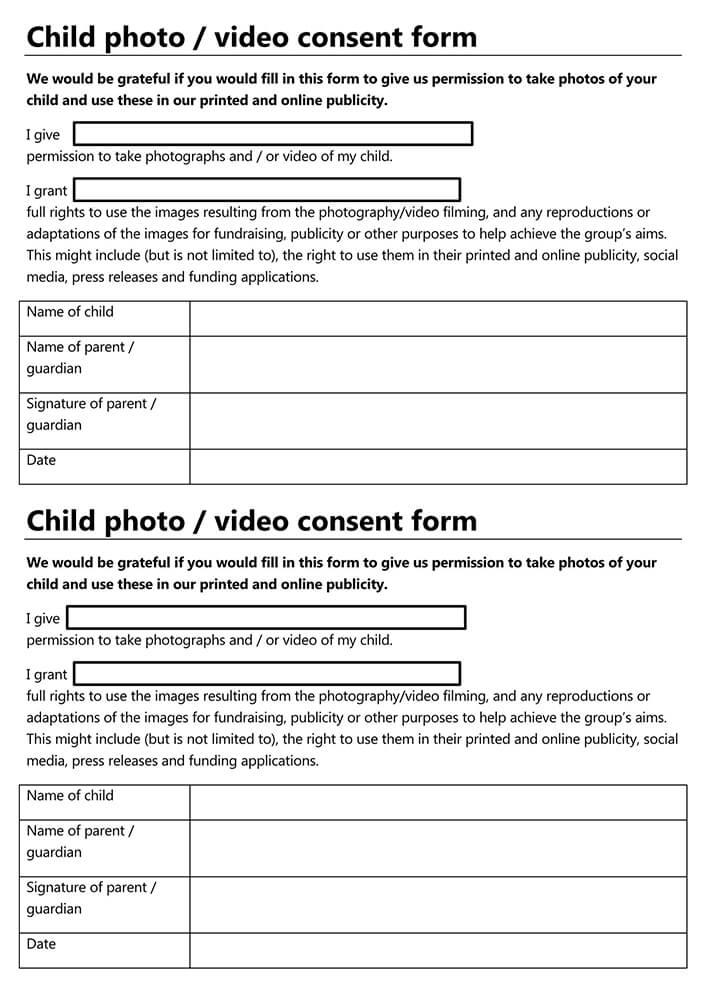
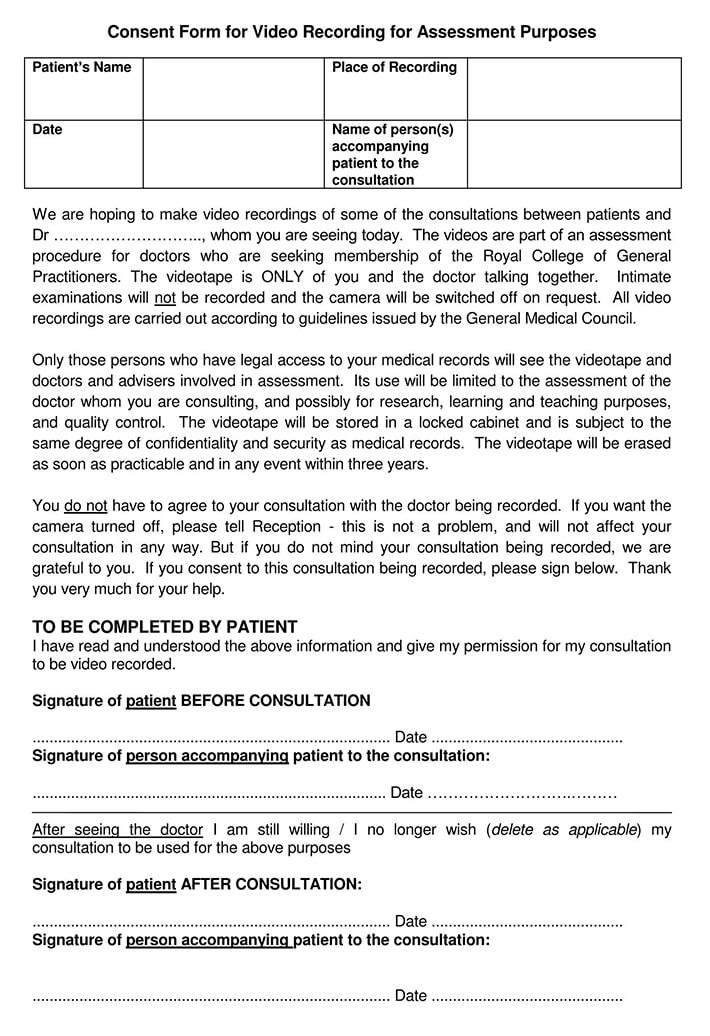

Frequently Asked Questions
Ownership of copyright usually depends on the circumstances of its creation. Unless they have transferred ownership to someone else, the videographer who filmed the content owns the copyright. Under special circumstances, ownership may be shared if it simply contains footage owned by a different party. This can, however, vary depending on the licensing agreement and whether the video was commissioned or created as part of a work-for-hire agreement.
In the United States, filming strangers in public places without their permission is not prohibited. However, there may be limitations to using the footage for commercial purposes if it contains identifiable individuals. In this case, you may need to obtain a signed release form in order to avoid potential lawsuits pertaining to defamation or invasion of privacy.
The person giving consent may, in some circumstances, be able to withdraw their consent to the footage at any time. However, this may not be possible if the content has already been distributed or used for a specific purpose.
